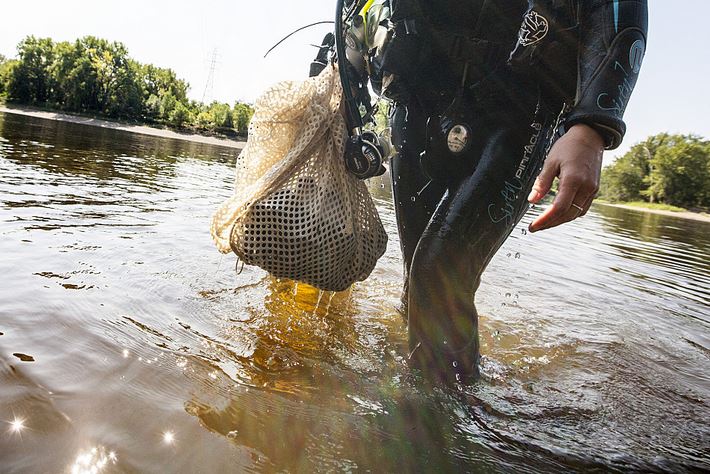It’s a tale of environmental redemption in the Twin Cities: On the Mississippi River between Minneapolis and St. Paul, a variety of native mussel species once wiped out by pollution are making a comeback.
Decades ago, mussels were everywhere in this part of the river. But then we started filling it with sewage, industrial waste and farm runoff. Mussels suffered.
But about 15 years ago, well after the 1972 Clean Water Act and other efforts led to water quality improvements, biologists surveyed the river and found some native mussels had started coming back.
Mussels play an important role in the aquatic food web. They’re filter feeders. They capture organic matter in the water and make it available to the small organisms that fish and other animals eat. And: “They cleanse the water,” says Bernard Sietman, a mussel biologist for the Minnesota Department of Natural Resources.
Tamara Smith and Sietman are part of a multi-year project that involves reintroducing several types of native mussels to the Mississippi River.
That includes three federally listed endangered species — the Higgins’ eye, the snuffbox and the winged mapleleaf. The reintroductions started in 2004.
See full article, photo credit, and listen to audio version.

